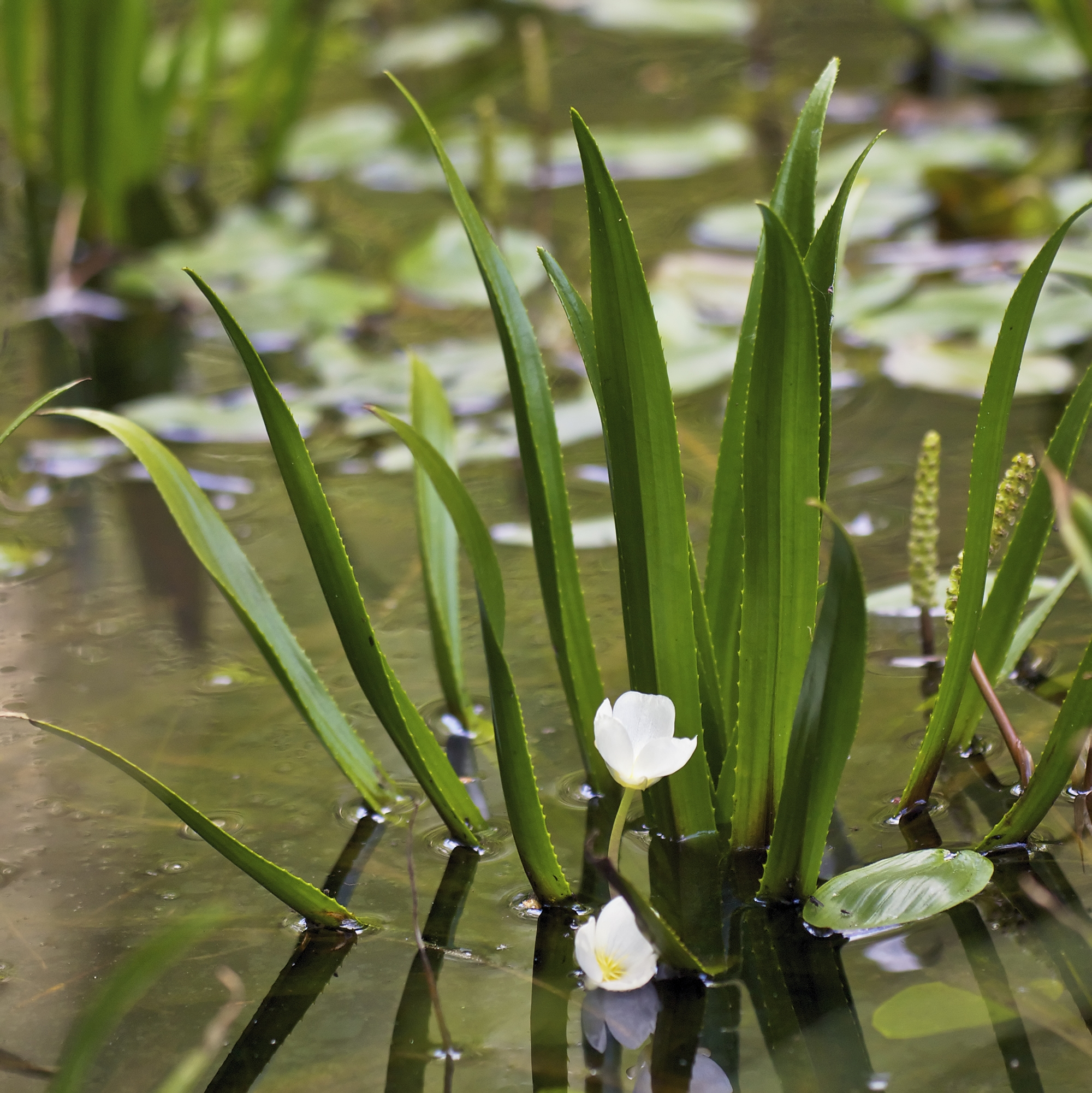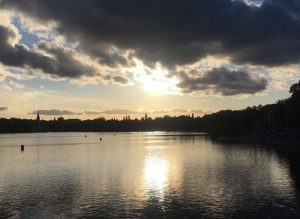By planting a variety of native plants in and around your pond you’ll create a healthy and varied pond habitat and hopefully native wildlife will come to the pond.
Pond plants can be divided into four groups all of which have specific functions to perform.
Deep water plants
Deep water plants are often referred to as oxygenators because in the presence of sunlight, their underwater leaves take in carbon dioxide (which is poisonous to animal life and produce oxygen, which is essential for their well being). Restrict yourself to two or three species because oxygenators grow very quickly and can easily take over the pond. There’s plenty of choice:
- Hornwort (Ceratophyllum demersum)
- Water crowfoot (Ranunculus aquatilis)
- Water starwort
- Willow moss
- Water violet (Hottonia palustris)
- Curled pondweed (Potamogeton crispus)
- Yellow water lily – brandy bottle (nuphar luteum)
- White water lily (nymphaea alba)
- Golden club (Orontium aquaticum)
- Spiked water milfoil (Myriophyllum spicatum)
- Water Hawthorn (Aponogeton distachyos)
- Frog bit (Hydrocharis morsus-ranae)
- Water soldier (stratiotes alodides)
- Amphibious persicaria (Polygonum amphibium)
- Mares tail (Hippurus vulgaris)
Usually sold in bunches by garden centres, oxygenators stand the best chance if rooted in a planter containing a pond soil mixture which is gently lowered into the deeper part of the pond.
Floaters
These are plants which either float freely at or near the surface (like the water soldier and duckweed) or are anchored to the bottom but produce large floating leaves (like the water lily and arrowhead). They have an important part to play in the ponds stability by excluding light from the water which helps to prevent algae growing too quickly and turning the water green, red or brown.
True floaters are easy to plant – simply drop them into the water, but avoid some of the aliens such as azolla, which can cover the whole surface in a few weeks shutting out the light. Other aliens include water lettuce, water hyacinth and water chestnuts. Water lilies must be stabilised in soil if they are to thrive.
Shallow levels
Moving closer to the bank, we come across a group of plants which grow best in shallow water where their roots gain a foothold in the mud. These plants help to keep the nutrient levels under control. Monkey musk, spearwort, marestail, water plantain, flowering rush, lesser reedmace, bur reed and water forget me not all come into this category. Place the plants in groups in planters which can be located on a shelf covered with about 15 cm (6”) of water.
Marginals
Finally there are the marginals, those plants need plenty of water but also need their roots firmly bedded into the soil.
Here the choice is larger:
- Marsh marigold (caltha palustris)
- Brooklime
- Bogbean
- Reed mace
- Yellow flag (iris pseudacorus)
- Yellow loosestrife (Lysimachia vulgaris)
- Ladies smock
- Sweet scented rush (acorus calamus)
- Flowering rush (Butomus umbellatus
- Bog arum (Calla palustris)
- Water Forget-me-not (Myosotis scorpioides)
- Greater spearwort (Ranunculus flammula)
- Soft rush (Juncus effusus)
- Water plantain (Alisma plantago-aquatica)
- Water mint (Mentha aquatica)
- Water avens (Geum rivale)
Plants to avoid
- Water fern (azolla filiculoides)
- New Zealand Pygmy Weed
- Australian swamp stonecrop (crassula helmsii)
- Water hyacinth (Eichhomia crassipes)
- Canadian pondweed (Elodea canadensis)
- Floating pennywort (Hydrocotyleranunculoides)
- Common reed (Phragmites australis) Very invasive

Reproduced with permission of North West Parks Friends Forum







